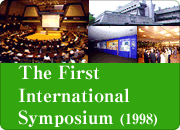Sunday, October 26, 2008
Keynote Lectures
NANJO, Kishio
Wakayama Medical University, Japan
9:00-9:30
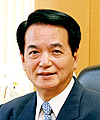
"Genetic Background of Type 2 Diabetes in Asian Population"
Presentation in brief
At present, the worldwide explosive increase of diabetes mellitus is the most serious health problem. We know that the genetic predisposition of type 2 diabetes is different between Asian and Caucasian. Main cause of this difference seems to be a difference in the traditional food culture, rice-based diet or bread-based diet. In the lecture, I would like to talk about type 2 diabetes susceptibility genes in Asian population who has been based on rice, and discuss the possible effectiveness of the rice-based diet for diabetes prevention.
Brief profile including research interest
1970: Graduated from Wakayama Medical University ( M.D. )
1983: Ph.D. from Wakayama Medical University
1984 -1986: Research Associate, The University of Chicago
1989 - date: Professor and Chairman, Department of Medicine, Wakayama Medical University
1998 - 2000: Vice-President of University Hospital
2005 - date: President and Chairman, Wakayama Medical University
Research interests: Molecular genetics of Type 2 Diabetes, Epidemiology of Diabetes
He has discovered many novel gene mutations associated with type 2 diabetes such as “Insulin wakayama”, and he also established the Study Group of Molecular Diabetology in Asia in 1999.
NAMAI, Chisho
Koyasan University, Japan
9:30-10:00
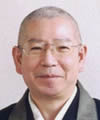
"Food and Religion -From Eastern Point of View-"
Presentation in brief
Every religion has close connection with food, the most important matter based on which people's every day life can be sustained. Modern societies forget sometime this fundamental fact. I would like to discuss our lives concerned with this basic matter, especially from the view point of the eastern religious culture.
Brief profile including research interest
Born in Ibaraki 1947, graduated from Koyasan University department of Buddhistlogy(1970), Studied at Graduate School of Kyoto University in Religious Studies(1970-1977). Studied on Indology in India at L.D.Institute of Indology as a Research scholar sent by Japan Minister of Education(1979-1981). Teaching at Koyasan University from 1979 to present, being appointed as the dean of the Graduate school (1996-2002), the Director of the Research Institute of Esoteric Buddhist Culture (2002-2008), President of Koyasan University (2003-2007). Published some books on Buddhist Thoughts and Shingon Buddhism. Papers on Buddhist studies in International and Japanese academic journals are many.
DOBERMANN, Achim
International Rice Research Institute, Philippines
10:00-10:30

"Rice Research for the Future"
Presentation in brief
A second Green Revolution in the rice bowls of the world is needed now as much as the first Green Revolution was needed 40 years ago. It must re-vitalize yield growth, but also allow the poor access to more nutritious and higher-quality rice. It must be based on solid scientific principles that aim at a sustainable, ecological intensification of rice systems at high levels of yield and resource use efficiency. Many new opportunities for this exist, but they need to be pursued and applied more vigorously. Speeding up the delivery of new technologies and, at the same time, investing in future breakthroughs in science require new public-private-sector partnerships that build on the comparative strengths of each sector.
Brief profile including research interest
Dr. Achim Dobermann is Deputy Director General for Research at the International Rice Research Institute (IRRI), Philippines. Dr. Dobermann earned his M.S. and Ph.D. degrees from the University of Leipzig in Germany. He is recognized internationally as an authority on soil and crop research in intensive cereal cropping systems. His research has focused on understanding of crop yield potential and fine-tuning of fertilizer and crop management practices to improve yield, profitability, and environmental quality.
He has published more than 200 scientific papers and he has received numerous national and international awards for his scientific contributions. Dr. Dobermann is also an elected Fellow of the American Society of Agronomy and a Fellow of the Soil Science Society of America.
At present, as IRRI's Deputy Director General for Research, Dr. Dobermann guides a wide range of strategic and applied rice research programs led by IRRI in collaboration with its partners worldwide.
SEINO, Yutaka
Kansai Electric Power Hospital, Japan
14:00-14:30

"Pathophysiology of Japanese Type2 Diabetes"
Presentation in brief
My main research interest is pancreatic beta cell pathophysiology and incretin. I have been working on mechanism of insulin secration and defect of pancreatic beta cell in type2 diabetes. I am also interested in incretin which stimulate insulin secretion in a glucose dependent manner. Incretin is unique hormone which is secreted after meal ingestion. Now incretin based treanment of type2 diabetes is clinically available.
Brief profile including research interest
I became assistant professor in Kobe University, 1973. I spent 2 years (1977-1979)
In University of Washington in Seattle, and I became assistant professor and associate professor in Kyoto University. In 1996, I was professor of medicine in Kyoto University.
Now I am a president of Kansai Electric Power Hospital.
Session I: Ferulic Acid & Oryzanol 10:30 - 12:30
ANSELMI, Cecilia
University of Siena, Italy

"Ferulic Acid and Its Derivatives in Skin Photoprotection: Technologies and Biological Properties"
Presentation in brief
The application on the skin of products containing sunscreens and antioxidants is one of the most common strategies for skin photoprotection.
Among the natural products studied we evaluated the antioxidant/radical scavenging activities of Ferulic Acid and its derivatives. To improve its physico-chemical stability we set up several technological innovations. Liposomes, SLN (solid lipidic nanoparticle), cyclodextrins and microspheres were utilised for this purpose.
Brief profile including research interest
Prof. Cecilia Anselmi is the Head of Interdepartmental Centre of Cosmetics Science and Technologies of the University of Siena; Coordinator of Master of second course in Cosmetics Science and Technologies; Director of PhD School in Pharmaceutical Sciences (with session in Cosmetics Science and Technologies).
The scientific activity performed in collaboration with private and public institutions has been aimed at the study of biologically active molecules to be utilised in the cosmetic field.
Several studies have been carried out in the field of both UVA and UVB sun-filters as well as odorous molecules.
At present, a very important aspect of the research is focused on natural antioxidants and radical scavengers with particular regard to rice derivatives.
NAKAMURA, Shigenobu
Rakuwakai Kyoto Clinical Research Center, Japan
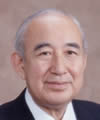
"Effect of ANM176™ Containing Ferulic Acid on Alzheimer's Disease"
Presentation in brief
AMN176 containing ferulic acid and garden angelica extract was administered 143 patients with Alzheimer's disease for 9 months. The cognitive function was measured by Alzheimer's disease assessment scale-cognitive subscale (ADAS-cog). The progress of the decline in cognitive functions was prevented by the administration of AMN176, especially in patients with mild Alzheimer's disease.
Brief profile including research interest
Birth: Kyoto, Nov. 1938
Education:
1957-1963 Medical School of Kyoto University
1964-1968 Department of Medical Chemistry, Kyoto University
1971-1972 Postdoctoral fellow in Department of Pharmacology, Linacre College, Oxford University
Professional Career
1968-1981 Assistant professor of Department of Geriatric Medicine, Kyoto University
1981-1990 Associate professor of Department of Neurology, Kyoto University
1990-2002 Professor of Third Department of Internal Medicine, Hiroshima University School of Medicine
2002- Director of Rakuwakai Kyoto Clinical Trial Center
2002- Professor emeritus, Hiroshima University
Membership of medical and scientific society
1991- Fellow of the Royal Society of Medicine
1994- National Delegate of Alzheimer's Disease International
OKAJIMA, Kenji
Nagoya City University, Japan
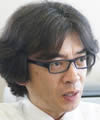
"Major Components of Rice Bran, Thiamine, Gamma-Oryzanol and Gamma-Aminobutyric Acid Increase Insulin-Like Growth Factor-I Production through Sensory Neuron Activation; the Molecular Mechanism(s) and Biological Effects"
Presentation in brief
We previously reported that calcitonin gene-related peptide, a neuropeptide released from sensory neurons upon activation, increases insulin-like growth factor-I (IGF-I) production. We hypothesized that components in the rice bran germ might increase IGF-I production by activating sensory neurons. We disclosed that thiamine, γ-oryzanol and GABA increased IGF-I production through sensory neuron activation, thereby improving the cognitive function in mice
Brief profile including research interest
1978: Graduated from Kumamoto University Medical School (Obtained a Degree of Medical Doctor)
1982: Graduated from the post doctoral course at Kumamoto University Medical School (Biochemistry) and obtained a degree of Ph.D
2005 - present: Professor of Translational Medical Science Research, Nagoya City University Graduate School of Medical Sciences.
Research interests: Vascular Biology; Neurology; Laboratory Medicine
SASAKI, Hideyuki
Wakayama Medical University, Japan
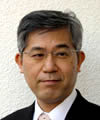
"Ferulic Acid Prevents Pathological and Functional Abnormalities of the Kidney in Otsuka Long-Evans Tokushima Fatty Diabetic Rats"
Presentation in brief
Ferulic acid supplementation significantly suppressed the elevation of urinary protein excretion, renal pathological damage scores and renal TGF-β1 mRNA expression in Otsuka Long-Evans Tokushima Fatty (OLETF) diabetic rats. Ferulic acid therefore may have the preventative effects on diabetic nephropathy, and it may be more potent than alpha-tocopherol
Brief profile including research interest
1981 Graduated Wakayama Medical University (WMU)
1988-1990 Assistant professor of the first department of medicine, WMU
1990 Obtained PhD
1993-1999 Associate professor (Lecturer) of the first department of medicine, WMU
(1994-1996 Visiting Scientist, Mayo Clinic, Rochester, USA)
2000- present, Associate professor of the first department of medicine, WMU
Specialty : Internal medicine, diabetology, endocrinology
Research Interest: Diabetic chronic complications especially diabetic polyneuropathy
SONG, Dong-Keun
Hallym University Medical School, Korea
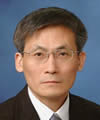
"Protective Effects of Ferulic Acid in Alzheimer's Disease Model Mice"
Presentation in brief
Current knowledge on the protective effects of ferulic acid against beta-amyloid peptide toxicity and its action mechanisms revealed by us as well as other investigators will be reviewed.
Brief profile including research interest
Academic Education:
1981 M.D. College of Medicine, Seoul National University, Seoul, Korea
1986 M.S. Pharmacology, Seoul National University, Seoul, Korea
1989 Ph.D. Pharmacology, Seoul National University, Seoul, Korea
Research interests:
evaluation of natural substances as therapeutic or preventive agents against inflammation-related disorders
Representative publications:
Protection against beta-amyloid peptide toxicity in vivo with long-term administration of ferulic acid. Yan et al., Br J Pharmacol. 2001;133:89-96.
Therapeutic effects of lysophosphatidylcholine in experimental sepsis. Yan et al., Nat Med. 2004;10:161-7.
TSUDA, Hiroyuki
Nagoya City University, Japan
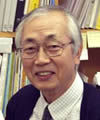
"Inhibition of Colon Carcinogenesis by Rice Bran Components"
Presentation in brief
The chemopreventive effects of phenolic compounds in rice bran component were assessed in a rat colon carcinogenesis models. Results indicate that ethyl 3-(4'-geranyloxy-3'-methoxyphenyl)-2-propenoate (EGMP) is the most effective inhibitory agent of the related compounds tested. Since it did not show any adverse effects in rats, EGMP is a good candidate for further study as a cancer preventive agent in humans.
Brief profile including research interest
Dr. Tsuda Graduated from Nagoya City University Medical School, then joined at the Department of Pathology, University of Toronto as a Postdoctoral Fellow in 1977. He promoted to the Chief of Experimental Pathology and Chemotherapy Division, National Cancer Center Research Institute, Tokyo in 1993, then Professor of Department of Molecular Toxicology, Nagoya City University Graduate School of Medical Sciences in 2003. Main research area is mechanism of chemical carcinogenesis, cancer chemoprevention, toxicology of environmental compounds. He is a member of Food Safety Commission, Pesticides Expert Committee and also a Member of Advisory Group of the Carcinogen Evaluation Monograph of the WHO International Agency for Research on Cancer.
Session II: Starch, Edible Fiber, Anthocyanin & Others 14:30 - 16:50
CHOI, Hae Chune
Korea Rice Technical Working Group, Korea
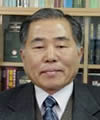
"Ultrastructure and Hygienic Function of a High-Dietary Fiber & High-Amylose Mutant Rice, Goami 2"
Presentation in brief
A new rice mutant Goami 2 (G2) is unusually high in amylose and dietary fiber contents and it has B-type crystallinity of starch and markedly lower proportion of short chains in distribution of glucan-chain fractions of debranched starch as compared with the original rice variety, Ilpumbyeo (IP). About half of compound starch granules of G2 show fused thick wall structure of surrounding individual starch granules, which result the barrier of water absorption, low swelling power, low gelatinization of rice grain and highly resistant to malt digestion of cooked rice. G2 revealed a considerable "health effect" by reducing the blood glucose and insulin levels in both normal and obese or diabetic participants after feeding this rice orally. G2 also demonstrated lowering the levels of serum triglycerides and C-peptides in obese persons.
Brief profile including research interest
1985 Ph. D. degree from Graduate School, Seoul National Univ.
1986 Senior researcher in National Institute of Crop Science, RDA
2000 Director of Rice Genetics & Breeding Div., NICS, RDA
2002 Professor of Agriculture Biotechnology Depart., Kangwon National Univ.
2001 Vicepresident of Korean Society of Crop Science and Korean Breeding Society.
2007 Vicepresident of Korea Rice Technical Working Group
<Award>
2001. 4. Science Prize by the Korean Breeding Society
2004.12. Nongjogeunjeong Medal by President of the Republic of Korea
2005. 2. Koshihikari International Rice Prize
2006. 5. Science Prize by the President of Korea Rice Technical Working Group
<Special interest>
Rice genetics & breeding and quality
FITZGERALD, Melissa
International Rice Research Institute, Philippines

"Searching for Structures of Starch in Rice to Mitigate the Consequences of Nutritional Diseases."
Presentation in brief
I will be speaking about the range in the amount of resistant starch in freshly cooed and retrograded rice using many different varieties, including mutants. I will show the structure of the starch that resists digestion and speak about the relationships between resistant starch and the components of the rice grain.
Brief profile including research interest
Research interests are the physical, sensory, cooking and nutritional properties of rice. I am interesting in the genetic, biochemical and physiological control and processes that operate during grain-filling that lead to particular structures and ratios of the components of the grain, that determine the traits of quality expressed by those grains. Current projects include the metabolomics of aroma, genes for eliminating chalk, genetics of gelatinisation temperature, structure and size distributions of amylopectin and amylose molecules, structures of resistant starch, and genetics and structural features of starches with different rates of digestibility. I also chair the International Network for Quality Rice, which has several projects about bringing new science to old traits of quality.
ICHIYANAGI, Takashi
Niigata University of Pharmacy and Applied Life Sciences, Japan

"Functionality and Biological Behaviors of Anthocyanins from Purple Black Rice"
Presentation in brief
In the present work, I focused on anthocyanins, pigment containing in certain types of colored rice peel and will summarize their functionality of them in both in vivo and in vitro. I will further report biological fate of colored rice anthocyanins in experimental animals to evaluate possibility of disease prevention of them.
Brief profile including research interest
Date of birth: February/06/1969
Place of birth: Niigata, Japan
Education: Pharmaceutical training (Niigata College of Pharmacy, Niigata Japan)
PhD: University of Yamanashi, School of Medicine and Technology (2004)
Teaching appointment:
Assistant professor of Environmental Chemistry, Niigata University of Pharmacy and Applied Life Sciences (1998-2006)
Associate professor of Pharmacognosy and Natural Products Chemistry, Niigata University of Pharmacy and Applied Life Sciences (2006-)
Research interest:
1. Absorption and metabolism of functional food factors
2. Disease prevention by compounds in food and Chinese traditional medicine
KITAMURA, Shinichi
Osaka Prefecture University, Japan

"Characterization of Slowly Digested Starch of Waxy/Amylose-extender Double-mutant rice"
Presentation in brief
Properties of glycemic and insulinemic response to dietary starch are directly related to the rate of starch digestion. The raw wx/ae starch was almost indigestible by rats. Rats fed cooked wx/ae starch showed a slowly increasing a blood glucose level and had lower blood glucose levels than rats fed cooked wx starch or wild-type starch. Genetic modification of starch may allow for the production of a slowly digested starch that could be used in new functional human diet.
Brief profile including research interest
I received PhD in Agricultural Chemistry from Kyoto University in 1984. From 1985 to 1987 I was a Postdoctoral Fellow at Yale University. I am now professor in Chemistry of Biological Macromolecules at Osaka Prefectural University
My research group focuses on polysaccharide engineering including gene expression profiling of sugar metabolism in rice, enzymatic syntheses of new functional polysaccharides, and biological activities of polysaccharides.
LING, Wenhua
Sun Yat-Sen University, Northern Campus, China

"Supplement Black Rice and Its Pigment Anthocyanidins Reduced Atherosclerotic Formation in Different Animal Models."
Presentation in brief
Black rice and its anthocyanin extract show beneficial role in inhibiting atheroslcerotic formation in animal models. Anthocyanin extract from black rice improve lipid profile, serum inflammatory agents in human subjects. Futhermore, anthocyanin molecular promote cholesterol efflux from macrophages and inhibit CD40 induced inflammation in endothelial cells.
Brief profile including research interest
My research interests are focusing on the pathgenesis of atherosclerosis and the beneficial role of phytochemical derived from natural plant food such as rice, berry in improving atherosclerosis, diabetes and obesity. Among phytochemicals, we have paid much attention on protective role of anthocyanin derived from black rice against atherosclerosis and diabetes as well as obesity.
OHTSUBO, Ken'ichi
Niigata University, Japan
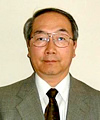
"Possibility of Diabete Prevention by High-Amylose Rice"
Presentation in brief
Dr. Ohtsubo started the cooperative research on low GI rice to prevent diabete with Dr. Tsuji, Dr. Utsunomiya and Dr. Masuda. High-amylose rice is promising to prevent diabete because its GI is lower than low-amylose one.
Brief profile including research interest
Dr. Ohtsubo major in the research on quality and utilization of rice. Particularly, he is interested in the development of the novel method to assay the eating qualities of rice grains. He developed PCR method to identify or differentiate the rice cultivars. He is now involved in cooperative research on low GI rice to prevent diabete.
YOKOYAMA, Wallace
USDA Agricultural Research Service, USA

"Evaluation of the Nutritional Properties of Pre-Germinated Rice in Hypercholesterolemic Hamster Model"
Presentation in brief
Pre-germinated rice bran is thought to be healthier than white rice and has become popular in Japan. Hamsters were fed a high fat diet containing brown rice germinated for 0, 24, 48 and 72 hrs for 6 weeks. Blood glucose was lower than control and body weight increased. Hepatic gene expression of PPAR alpha, CHREBP, SREBP1c, FAS, SCD and others were evaluated.
Brief profile including research interest
Dr. Yokoyama received his Ph. D. in Biophysics from the University of California, Davis in 1985, and B.S. in Chemistry from University of California, Los Angeles. His current research focuses on understanding and preventing obesity related metabolic diseases by soluble dietary polymers. Animal models, mainly the Syrian hamster, and molecular methods are used to determine the differences in the expression of genes that regulate fat and carbohydrate metabolism in normal and insulin resistant animals fed diets that differ on in soluble and insoluble fibers, respectively.
Session III: Protein, Peptides and Amino Acids 17:00 - 18:30
ASAKURA, Tomiko
The University of Tokyo, Japan
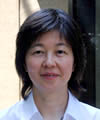
"Novel Protease Occurring in Cereals
– Functional Analysis and Application"
Presentation in brief
Proteases existing in cereals are involved in a number of physiological events, some of which may be useful for food processing. Gliadain, a cysteine proteases in wheat seeds whose expression is regulated by gibberellin, specifically digests gliadin. Oryzasin, an aspartic protease in rice, digests glutelin in vitro, also having milk-clotting activity.
Brief profile including research interest
Associate Professor, Nissin Food Products Co. Endowed Laboratory of Taste Science, The University of Tokyo. My major research interest is in the analysis of functions of plant proteases, especially aspartic proteases. Plant seed proteases are involved in the maturation and degradation of storage proteins whose quality and quantity in edible grains determine a major part of cereal properties. The comprehensive analysis of expressed molecules participating in the metabolism of storage proteins may reveal new factors contributing to tastes and rheological properties of foods. Our research will be applied to molecular breeding for production of tasty foods.
MASUMURA, Takehiro
Kyoto Prefectural University, Japan
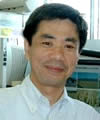
"Structure and Function of Rice Seed Protein"
Presentation in brief
In this presentation, the molecular analysis of the structural characteristics in rice seed proteins, and functions of rice protein bodies for mammalian digestive organs, based on our recent findings are explained.
Brief profile including research interest
I am currently engaged in the following researches.
1. To clarify the molecular mechanisms of rice endosperm developing.
2. To clarify the accumulation process of rice seed storage proteins.
3. Utilization of the recombinant rice plant expressing the useful protein.
4. Utilization of the rice seed storage proteins for processing foods.
MORITA, Naofumi
Toyo College of Food Technology, Japan
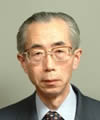
"Gamma-Amino-Butyric Acid and Functional Materials in Brown Rice, Buckwheat and Pseudo-Cereals during Germination and Their Applications to Food Processing"
Presentation in brief
Life activity of cereal grains starts with germination. Therefore, GABA and other functional materials in brown rice, buckwheat and pseudo-cereals were tested. GABA, amino acid and antioxidants increased along with germination. During germination of buckwheat, allergenic protein partly disappeared, then the buckwheat was applied for processing of soybean paste or natto fermentation instead of soybean.
Brief profile including research interest
Main fields of interest are food chemistry, cereal science and analytical chemistry.
Academic background is as follows: B. Agric.1963–1967 at Osaka Prefecture University (OPU); Master of Agric 1967–1969 and Dr of Agric 1970–1975 at OPU, Graduate School.
After completion of Dr Degree, I joined Nara Medical University as a Research Associate.
In 1979, moved to OPU, Department of Agriculture as a Research Associate then became a Lecturer in 1990, an Associate Professor in 1996, and a Full Professor in 1998.
In 2006, ‘Top hundred scientists-2006-' was awarded from International Biographical Centre, Cambridge, England.
And I am currently president of Japanese Society for Cereal Scientists and Director of Food Atelier (Joint-Enterprise Corporation) '(Love and Dream' for the supply of non-allergenic foods.
Oversea Research: Chicago University, Dept of Biochemistry and Pediatrics, 1983-1984
Book: Dietary culture --- east and west, Osaka Municipal Universities Press (2005)
OURA, Shin
Research Institute of Gekkeikan Sake Co. Ltd, Japan

"Antihypertensive Peptides Derived from Sake Lees"
Presentation in brief
We have found ACE inhibitory activity of sake and sake lees, and isolated active peptides derived from rice protein. Then we have demonstrated anti-hypertensive effect of ACE inhibitory peptides by administration to SHR. Moreover we hydrolyzed sake lees by protease in order to increase such peptides and executed oral administration to human volunteers.
Brief profile including research interest
We have found various physiological functionalities of sake, sake lees and other by-products in sake-brewing. Then we have isolated ACE (angiotensin-converting enzyme) inhibitory peptides, PEP (prolyl endopeptidase) inhibitory peptides, and other functional compounds from them.
Recently I have shown that amazake (traditional Japanese beverage made from sake lees and rice-koji) prevented obesity in high-fat deit fed mice, hypertension in high-salt deit fed mice, and amnesia in scopolamine injected mice. Also I have shown that sake lees fermented by Lactobacillus brevis prevented alopecia in cytosine arabinoside injected rats.
Monday, October 27, 2008
Keynote Lectures
SASAKI, Takuji
National Institute of Agrobiological Science, Japan
9:00 - 9:30
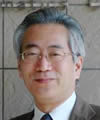
"Understanding the Rice Plant as an Assemblage of Genetic Code"
Presentation in brief
Map-based, accurate rice genome sequence was finally obtained in 2004. We now understand how the rice genome is composed of 400M nucleotides. Currently, researches on rice gene identification involved in complex traits of agronomical importance are very much accelerated using the annotated rice genome sequence. These results are useful for discovery of new allelic variation to improve rice plants by a conventional breeding. Also genome sequence information assists effective manipulation of genomic structure for effective gene transfer from an align organisms.
Brief profile including research interest
Dr. Takuji Sasaki is currently the vice president of the National Institute of Agrobiological Sciences in Tsukuba, Japan. He is a rice biologist who led the International Rice Genome Sequencing Project in decoding the complete sequence of the rice genome. He has also been involved in a big project "Genomics for Agricultural Innovation" conducted by the Ministry of Agriculture, Forestry and Fisheries of Japan as a principal coordinator. He has received many awards including the "International Year of Rice Global Scientific Award" by FAO and "Golden Sickle Award" by Thailand.
KAGAWA, Yoshiko
Kagawa Nutrition University, Japan
9:30-10:00

"Japanese Food Habits"
Presentation in brief
The introduction of the results of implementing obtained at Kagawa Nutrition university Nutrition clinic. "The 4 food group scoring method".
Brief profile including research interest
Born 1931 Tokyo, doctor / doctor of medicine, won Calif. Univ. M.S. degree.
At Present, Kagawa Nutrition university professor / the president.
I have been studying iron metabolism since graduate school and studied abroad the manganese deficiency.
I establish a nutrition clinic "The 4 food group scoring method" (KNU diet) that mother (Aya Kagawa) devised. She is the founder of Kagawa Nutrition University in order to prevent beriberi.
OSAWA, Toshihiko
Nagoya University, Japan
13:50 - 14:20
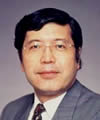
"Protective Role of Rice Antioxidative Components on Obesity-Related Disorders"
Presentation in brief
Protective role of the main antioxidative components contained in rice bran such as ferulic acid, tocotrienol and anthocyanin on obesity-related disorders have been evaluated using mouse and human adipocyte cell systems. Potential development as functional foods will be discussed.
Brief profile including research interest
Current areas of research are;
(1) Analysis of mechanism of oxidative stress by application of immunochemical methods.
(2) Protective role of dietary components in oxidative stress, and role of food factors for cancer prevention.
Session IV: Inositol &IP6 10:00 - 12:20
DILWORTH, Lowell
University of the West Indies, Mona Campas, Jamaica

"Metabolic Effects of IP6 in Rat Models"
Presentation in brief
My presentation will focus on the effects of IP6 consumption on carbohydrate and lipid metabolism in Wistar rat models. Benefits on lipid and blood glucose levels were observed in rats which consumed Ip6 in the short term.
Brief profile including research interest
I am a Research Fellow at the University of the West Indies, Mona Jamaica where I earned a PhD degree in Biochemistry. I do extensive work on the levels of nuritents and Bio-astive compounds in commonly eaten foods and the beneficial effects of these compounds in treating some metabolic diseases.
DONG, Zigang
University of Minnesota, USA

"Molecular Mechanisms of Cancer Preventing Effect of IP6"
Presentation in brief
Dr. Dong's research focuses on the chemopreventive effects of green and black tea polyphenols and IP6 from rice by studying their effects on cell signaling. A multistage process, cancer is thought to be prevented, reversed, or delayed by targeting specific cancer-causing genes or proteins during carcinogenesis. His research identified PI-3 kinase AP-1 and other proteins as targets for IP6. Identification of these targets represents the first, most critical step in understanding molecular and biochemical mechanisms of IP6's anticancer effect.
Brief profile including research interest
Cancer is one of the leading causes of death in today's world. Preventing cancer by decreasing exposure to cancer risk factors and increasing the intake of anticancer agents or maintaining healthy lifestyles will be an effective way to reduce this deadly disease. Various dietary factors, including many isolated from green tea, black tea, broccoli, ginger root, grapes and other fruits and vegetables, showed strong anticancer activities. However, the molecular basis of the anticancer effect of these preventive agents is not clear.
Dr. Dong and his group have evaluated the potential utility of tea polyphenols and other distinct dietary factors as cancer preventive agents, due to their ability to effectively alter molecular targets within cancer cells. In a broader sense, these molecular mechanism studies will help develop better chemopreventive agents as a whole and facilitate the design of more effective chemoprevention trials. Dr. Dong's work in ultraviolet/chemical carcinogen-induced signal transduction pathways provided molecular targets for chemopreventive agents in skin carcinogenesis.
GRASES, Felix
University of Balearic Islands, Spain

"Phytate and Biological Calcification: from Renal Calculi to Cardiovascular Calcification and Osteoporosis."
Presentation in brief
The latests studies have demonstrated that phytate acts as a modulator of biological calcification. Thus, it exhibits an important role in the prevention of calcium renal stone formation and also protects against soft tissue calcifications as cardiovascular calcifications. Moreover, as bisphosphonates, phytate has also demonstrated an important capacity to prevent osteoporosis. In this presentation, in vitro an in vivo (rats and human) studies that demonstrate such capacities are shown and discussed.
Brief profile including research interest
Dr.Felix Grases, Professor, Director of the Laboratory of Renal Lithiasis Research, at Balearic Islands University, Director of the University Institute of Health Science Research (IUNICS), Palma de Mallorca, Spain and full member of the Royal Academy of Medecine of Balearic Islands. His main research interest is renal lithiasis and related topics. He has carried out pioneering experiments using in vitro systems that emulate renal calculi formation. These studies together with the study of renal renal calculi permitted to clarify several aspects about the mechanism of calculi formation. He studied and demonstrated the properties of phytate as crystallization inhibitor and its usefulness in treatment of calcium oxalate renal lithiasis and other pathological calcifications (sialolithiasis, cardiovascular calcifications, osteoporosis). He also developed a simple screening test to evaluate the urinary risk to develop calcium stones, that apart from diagnose purpose permits to evaluate the efficacy of a given therapy. He has publised numerous book chapters and about 275 scientific papers. He is also author of 12 patents.
MAEBA, Ryouta
Teikyo University School of Medicine, Japan Hokkaido University, Japan

HARA, Hiroshi
Japan Hokkaido University, Japan

"Myo-Inositol Treatment Increases Serum Plasmalogens and Decreases Small Dense LDL in Hyperlipidemic Subjects"
Presentation in brief
Increased plasmalogens biosynthesis and/or serum levels, induced by 2 wk of myo-inositol treatment, are especially effective in improving metabolic syndrome.
Brief profile including research interest
Free radical, Lipid peroxidation, Oxidative stress, Antioxidant, Lipoprotein metabolism, Plasmalogen, small dense LDL, Atherosclerosis, Metabolic syndrome, Myo-inositol
SZABO, Eva
U.S. National Institutes of Health, USA

"Myo-Inositol and the Prevention of Lung Cancer"
Presentation in brief
Myo-inositol is a promising agent for lung cancer prevention. Multiple animal carcinogenesis studies show inhibition of tumor development, while a phase I study identified a safe and tolerable dose as well as significant reversion of dysplasia. Potential mechanisms of action and strategies to test this agent clinically will be discussed.
Brief profile including research interest
Eva Szabo, MD is Chief of the Lung and Upper Aerodigestive Cancer Group in the Division of Cancer Prevention at the National Cancer Institute of the United States. A medical oncologist with a laboratory background, she oversees the development of agents for the prevention of lung cancer and head and neck cancer and sponsors clinical trials testing new prevention strategies. Dr. Szabo's research is focused on thiazolidinediones in cancer prevention and treatment, identification of new agents for prevention of aerodigestive cancers, and on development of new clinical trials models for early phase testing of cancer preventive agents.
VUCENIK, Ivana
University of Maryland School of Medicine, USA

"IP6 and Inositol in Cancer Prevention and Therapy"
Presentation in brief
Recently IP6 has received much attention for its role in cancer prevention, and control of experimental tumor growth and progression. In addition to reducing cell proliferation, IP6 induces apoptosis and differentiation of malignant cells. Preliminary studies in humans show that IP6 and inositol, the precursor molecule of IP6, appear to enhance the anticancer effect of conventional chemotherapy, control cancer metastases, and improve quality of life.
Brief profile including research interest
Dr. Ivana Vucenik is Associate Professor of Medical & Research Technology and Pathology at the University of Maryland School of Medicine in Baltimore. She received her Ph.D. in Immunology and Hematology from the University of Zagreb, Croatia and joined the University of Maryland in 1990. Since then she has been studying the anticancer function of inositol hexaphosphate (IP6) and inositol. She has been investigating the effect of IP6 on cell growth, differentiation, and its interaction with intracellular signal transduction pathways to understand the molecular mechanism(s) underlying this antineoplastic action. She has also been studying the antiplatelet and natural killer (NK)-cell enhancing functions of IP6. Another research project in her laboratory focuses on tumor markers expressed during cancer formation and its usefulness for early diagnosis and screening of cancer. Dr. Vucenik is also studying the phenomenon of aspirin resistance in humans. Her research has been supported by grants from the Susan Komen Breast Cancer Foundation, the American Institute for Cancer Research, the University of Maryland Designated Research Initiative Fund, and the University of Maryland Women Health Research Foundation.
Session V: Fat and Fat-Soluble Components 14:20 - 16:30
NICOLOSI, Robert
University of Massachusetts Lowell, USA

"Biological Effects of Rice Bran Oil Unsaponifiable Ingredients in Pre-Clinical and Clinical Studies: Their role in nanoemulsion delivery systems."
Presentation in brief
Presentation will review the biomedical applications of rice bran oil and include its role in formulating nanoemulsion for delivery of nutraceuticals and pharmaceuticals.
Brief profile including research interest
Harvard-Trained Biochemist/Nutritisnist, MS and Ph.D
University of New Hampshire. Approximately 200 publications, mostly in nutraceuticals and several patents pending in nanoemulsion delivery system.
Director offered for evaluating bioavailabuty and efficacy of nutiaceuticals Pharmaceuticals.
CHEN, Jiun-Rong
Taipei Medical University, Taiwan

"Alleviation of Oxidative Damage in Diabetic Rats by Rice Resistant Starch and Bran Oil Supplementation"
Presentation in brief
Our study demonstrated that oxidative mtDNA damage may occur in multiple tissues of STZ-induced diabetics rats. Intervention with rice bran oil treatment may reverse the increase in the frequency of 8-OHdG.
Brief profile including research interest
EDUCATION:
4/89 - 3/90 Research assistant, Tohoku University, Food Chemistry.
4/90 - 3/92 MS, Tohoku University, Food Chemistry, March 1992.
4/92 - 3/95 PhD, Tohoku University, Food Chemistry, March 1995. Dissertation advisor: Fumio Yamauchi, PhD, Professor
EXPERIENCE:
8/96 - 7/04 Associate Professor, Taipei Medical University, Taipei, Taiwan
7/97 - Committee Member, Bureau of Standards, Metrology and Inspection, Ministry of Economic Affairs, Taiwan
8/00 - Committee Member, Committee of Health Food, Department of Health, Taiwan
8/05 - Committee Member, National Science Council, Taiwan
RESEARCH FIELD:
Nutritional Chemistry, Food Function
IKEDA, Ikuo
Tohoku University, Japan
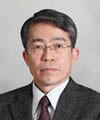
"Rice Plant Sterols and Health Prevention"
Presentation in brief
24-Methylenecycloartanol contained in rice bran γ-oryzanol is isomerized to cyclobranol during process for production of γ-oryzanol. We compared effects of isomerized rice sterols on cholesterol absorption to that of rice sterols. Our results suggest that rice sterols and isomerized rice sterols have a similar inhibitory effect on cholesterol absorption in rats.
Brief profile including research interest
1980.4 Assistant professor in Laboratory of Nutrition Chemistry, Kyushu University
1984-1986 Research associate in George Washington University Medical Center in the USA.
1992 Associate professor in Laboratory of Nutrition Chemistry, Kyushu University
2005 Professor in Tohoku University Graduate School of Agricultural Science
Research interest: Elucidation of physiological functions of food components preventing atherosclerosis
ISMAIL, Maznah
University Putra Malaysia, Malaysia
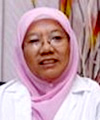
"Cardioprotective and Antioxidant Properties of Rice Bran Oil and Bioactives in Human"
Presentation in brief
This presentation is about Cardioprotection and Antioxidant properties of Rice Bran Oil and its Bioactives in Human. This paper highlights some of our findings on the effect of Rice Bran Oil, and Palm Oil-Rice Bran oil blends on indices of CHD and antioxidant status in a single blind crossover design human study. Bioavailability and the synergistic effect of major antioxidants, gamma-oryzanol and tocotrienol will also be described.
Brief profile including research interest
I graduated with B.Sc (Hons) in Biochemistry from University of Salford, England, M.Sc from Louisiana State University, Baton Rouge USA and Ph. D from University of Glasgow, Scotland.. I have been involved in teaching pre-clinical and health science courses at the Faculty of Medicine and Health Sciences for more than 25 years. Currently I am heading Laboratory of Molecular Biomedicine, Instutute of Bioscience, a research institute within Universiti Putra Malaysia. We have been working on nutraceuticals development and nutrigenomics. Among research topics that are currently being pursued include development and application of rice bran and germinated brown rice nutraceuticals on various health benefits and their gene interactions.
MIYAZAWA, Teruo
Tohoku University, Japan

"Physiological Function of Rice Bran Oil and Tocotrienols"
Presentation in brief
Rice bran oil and rice bran tocotrienol (T3) has gained increasing interest due to its health benefit like cholesterol-lowering effect. We found T3 acts as anti-angiogenic compound, suppresses telomerase in tumor growth, and attenuates allergenic reaction.
Brief profile including research interest
• Education and Professional Experience:
1982 Ph.D. in Food Chemistry from Tohoku University
1995-1996 Visiting Scientist, USDA Human Nutrition Research Center on Aging at Tufts University, Boston, USA
1998-now Professor, Food and Biodynamic Chemistry Lab., Tohoku University
• Author and co-author of over 340 scientific papers/reports, and book chapters, books, and 25 patents on lipid chemistry and functionalities of food lipids, lipid peroxidation in food and biological systems.
Served on
• Vice President / Japanese Society of Nutrition and Food Science Director / Japan Society for Bioscience, Biotechnology and Agrochemistry Councilor's member / Federation of Asian Nutrition Societies (FANS) Liaison member of Science Council of Japan
TSUJI, Etsuko
Hyogo University, Japan
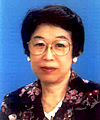
"Characteristics of Rice Bran Oil in the Regulation of Blood Cholesterol Level"
Presentation in brief
Rice bran oil is effective in lowering plasma cholesterol levels. Particulary the blending effect of rice bran oil with safflower oil (7:3) on serum cholesterol levels in human and rats is remarkable. The hypocholesterolemic effects of the components in rice bran oil are discussed.
Brief profile including research interest
Graduated Showa Pharmaceutical University
Researcher in The National Institute of Health and Nutrition (Ministry of Health, Labour and Welfare), Head of the Division of the Clinical Nutrition
Professor of Kawasaki University of Medical Welfare
Professor of Kawasaki University of Medical Welfare Graduate School
Professor of Hyogo University
My Field Work: Health Science, Nutrition Education
Prevention of Hyperlipidemia and Hypertension by Nutrition and Physical Exercise Treatment

